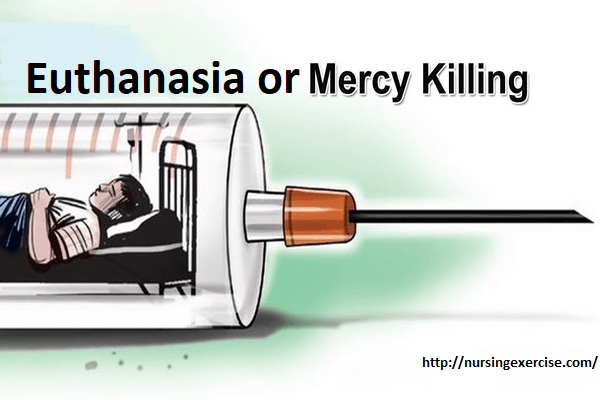What is Euthanasia?
Euthanasia is the act of putting to death painlessly or allowing dying, as by withholding extreme medical measures, a person who suffers from an incurable, especially a painful disease or condition. It is also known as a mercy killing.

It may be defined as the act or practice of killing someone who is very sick or injured to prevent any more suffering. This is separate from physician-assisted suicide so that a patient is prescribed a fatal dose of medication to end life but the act is not performed by the medical practitioner but the patient himself or herself.
Classifications of Euthanasia:
It is commonly called mercy killing which means ending one’s life based on the principle of mercy. It can be classified into three different types and they are:
1.Voluntary euthanasia:
It is the killing of a patient at his or her request in the belief that death would be a benefit to the patient and that the killing is for that reason justified. It is always conducted with the consent of the patient.
It can further be divided into two categories and they are:
A. Passive voluntary euthanasia:
It is the act of killing a patient by withholding unwanted medical treatment based on the patient’s own request. Such as switching off a machine that is keeping a person alive or, not carrying out surgery that will extend life for a short time.
B. Active voluntary euthanasia:
It is the deliberate act of killing the patient at the patient’s informed request.
2. Non-voluntary euthanasia:
It is the killing of a patient without his or her consent or where the consent of the patient is unavailable.
3. Involuntary euthanasia:
It is the killing of the patient which is conducted against the will of the patient and this is not accepted (illegal) in all countries worldwide.
What is DNR or DNAR in Medical?
DNR (Do Not Resuscitate) or DNAR (Do Not Attempt Resuscitation) is a legal written or oral instruction depending on the country to withhold cardiopulmonary resuscitation (CPR) or advanced cardiac life support (ACLS) when a patient’s heart or breathing has stopped.
This means physicians, nurses, and others medical staffs will not start any lifesaving emergency procedures such as CPR (mouth-to-mouth resuscitation and external chest compression), electric shock, insertion of a tube to open the patient’s airway, injection of medication into the heart or open-chest cardiac massage (OCCM).
Sometimes DNRs can be considered as a form of passive euthanasia, they are not controversial issues unless they are abused since they are aimed to stop patients from suffering pointlessly from the bad effects that resuscitation can cause.
Causes of Euthanasia:
The main causes of it are usually a path to relieve extreme pain (Painless death). It helps a person’s desire to end the suffering. Persons do not want to burden others.

Maria Khatun Mona is a Founder and Editor of Nursing Exercise Blog. She is a Nursing and Midwifery Expert. Currently she is working as a Registered Nurse at Evercare Hospital, Dhaka, Bangladesh. She has great passion in writing different articles on Nursing and Midwifery. Mail her at “maria.mona023@gmail.com”
